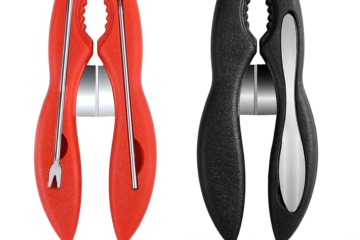Identify the Major Consumers
Understanding what uses electricity in your home is the first step towards curbing your energy consumption. Heating, cooling, ventilation systems, water heaters, and kitchen appliances often incur high electricity costs. By identifying these key players, you can begin to focus on ways to reduce your usage effectively.
Identifying the primary energy users in your household can result in both ecological advantages and considerable cost savings, as utilities often make up a large portion of household spending. This is especially crucial as energy costs continue to rise annually.
Switch to Energy-Efficient Appliances
Investing in energy-efficient appliances makes a noticeable difference in electricity consumption. These appliances are designed to use less electricity while performing the same tasks as their less efficient counterparts, achieving higher efficiency through advanced technology and innovative designs.
Choosing the Right Appliances
Energy-efficient refrigerators, washing machines, and dishwashers are options that can significantly decrease your total energy usage.
Though the initial investment may be higher for these appliances, the savings on utility bills over time often compensate for the extra cost. Additionally, many energy-efficient appliances also come with improved performance features, offering better results at lower energy expenditure.
Utilize Smart Thermostats
Smart thermostats offer advanced features that allow for better control over your home’s heating and cooling systems, making them significantly more efficient. Some smart thermostats can learn from your behavior, automatically adjusting to save energy when you’re not at home.
The ease of programming these devices from your smartphone ensures that you can manage your home’s climate efficiently, even on the go. Smart thermostats can be synced with other smart devices in your home, creating an integrated energy management system that optimizes every facet of your power usage.
Long-Term Savings
In the long run, smart thermostats can lead to significant savings by optimizing heating and cooling based on real-time data, weather forecasts, and usage patterns. Some models even provide monthly reports on your energy usage, offering insights and tips on being more efficient.
Reducing Phantom Load
Numerous electronic gadgets still consume power even when they are switched off. This phenomenon, known as ‘phantom load,’ can increase over time. To mitigate this, consider plugging items like microwaves, televisions, and computers into power strips and turn them off when not used.
Unplugging devices that are not active is a simple yet effective way to reduce unnecessary energy consumption. Phantom loads have the potential to make up to 10% of your home’s energy consumption; therefore, addressing this problem can lead to significant cost savings.
To add convenience, consider using smart power strips that automatically turn off devices’ power while in standby mode. This technology makes eliminating phantom load easier without manually unplugging each device.
Adopt LED Lighting
Transitioning to LED lighting is a simple and highly efficient method for reducing energy consumption. LEDs consume as little as 10% of the energy used by incandescent bulbs and have a lifespan up to 25 times longer.
This adjustment conserves electricity and decreases the need to change bulbs often, ultimately saving you money. LEDs are available in various color temperatures and brightness levels, making them suitable for all areas of your home, from living rooms to outdoor spaces.
Additionally, many LEDs are now available in dimmable versions, providing even more control over your lighting and contributing to energy savings. By retrofitting your existing fixtures with LED bulbs, you can immediately start seeing reductions in your electricity bill.
Take Seasonal Considerations Into Account
The way you use energy varies throughout the year. Properly insulating your home helps retain heat, reducing heating costs in winter. During summer, you can lower your air conditioning usage by using blackout curtains to block out the sun’s heat and keep your home cooler.
Adapting your energy-saving strategies to the season can lead to more significant savings. During spring and autumn, comfort can be maintained while minimizing energy consumption by opening windows and using ceiling fans for natural ventilation, reducing the necessity for heating and cooling.
Energy-Saving Tips for Each Season
Seal drafts around doors and windows to keep cold air out in winter. In summer, maintain your air conditioner to ensure it runs efficiently. Regular maintenance and seasonal adjustments can substantially affect your energy consumption throughout the year.
Explore Renewable Energy Options
Consider installing renewable energy systems like solar panels or small wind turbines for long-term energy savings. While the initial investment can be high, reducing utility bills over time makes it worthwhile.
Many governments also offer tax incentives for installing renewable energy systems, making this option even more attractive. Solar energy, in particular, has seen significant advancements, making it a more accessible and viable option for homeowners looking to reduce their carbon footprint and energy bills.
Choosing the Right Renewable Energy System
Assessing your home’s energy needs and geographical location is vital when exploring renewable energy options. Solar panels are best for areas with high sunlight exposure, while wind turbines suit regions with consistent wind streams. Consulting with professionals can help you decide the best approach for your situation.
Implement Habit Changes
Small changes in every day habits can lead to significant energy savings. For example, turn off lights when you leave a room, wash clothes in cold water, and air-dry dishes instead of using the dishwasher’s drying cycle.
When practiced consistently, these minor adjustments can lead to a noticeable reduction in your electricity bill. Simple habits such as unplugging chargers when not in use, setting the thermostat a few degrees lower in winter, and using energy-saving settings on appliances can make a considerable impact.
Creating a Sustainable Lifestyle
Developing an energy-efficient mindset extends beyond individual habits. Encourage your family members to adopt these practices, making energy conservation a collective effort. By nurturing a household culture of sustainability, you can ensure long-term benefits and inspire others to follow suit.




